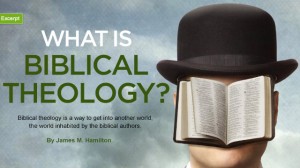In my contribution to the e-book God and the Gay Christian? A Response to Matthew Vines, I suggest that Vines has made pervasive use of logical fallacies. The following is a sampling of the logical and rhetorical fallacies Vines employs. This list could easily be lengthened, almost indefinitely.
Vines has assumed the conclusion that embracing his view, that committed same-sex relationships are not condemned by the Bible, would bear good fruit (e.g., p. 15).
Vines uses a false analogy in his appeal for an “experience based test” to show that the view that all same-sex relations are sinful bears bad fruit in the lives of people with same sex attractions. Vines claims that the early church determined theology on the basis of an “experience based test” when they concluded Gentiles did not need to be circumcised (p. 15). The analogy does not hold.
The approach that Vines takes to sexual orientation is a case of persuasive definition that leads him to give a positive answer to his own question: “Does new information we have about homosexuality also warrant a reinterpretation of Scripture?” (27; cf. p. 43). The problem with this, however, is that an orientation can be understood differently than Vines does.
Vines wants to avoid labels and find respectful ways to describe Christians who believe everything the Bible teaches, but the terms he uses nevertheless shift the discussion away from the fact that the Bible condemns the indulgence same-sex desires and makes an ad hominem attack on Christians who believe the Bible’s teaching. Vines makes this ad hominem argument by referring to those who hold the Bible’s teaching as non-affirming (p. 27–28) and suggesting that the church has harmed gay people by believing the Bible (cf. e.g., 13, “the church’s condemnation of same-sex relationshiops” –picture me politely raising my hand at this point to say, “um, excuse me, I think it was God who uttered the condemnation”). This makes Christians the issue rather than God or the Bible. Of course, it’s a lot easier to direct an ad hominem argument at Christians than to aim one of those at God or his word.
Vines presents a false choice when he writes, “The debate over gay Christians requires us to do one of two things: change our understanding of celibacy or change our understanding of marriage” (59–60). Illustrating the way his logical and rhetorical fallacies are often interwoven with each other, to create this false choice, Vines has misrepresented how Christians have understood celibacy, using a persuasive definition. The two possible action steps he gives are not, however, the only options, and his understanding of celibacy is inaccurate, as is his view of what counts as marriage.
Vines pursues a false dichotomy in his whole discussion of the sin of Sodom, where he seems to assume that if the Sodomites are guilty of inhospitality, violence, arrogance, etc., they cannot also be guilty of the flagrant violation of the created order seen when the men of Sodom want to “know” the men visiting Lot. Vines writes, “But this is not an expression of sexual desire. It is a threatened gang rape. . . . Agression and dominance were the motives in these situations, not sexual attraction” (67). False dichotomies and red herrings in both sentences.
Vines asks a loaded question that creates unrealistic expectations when he writes, “But do any biblical texts that directly mention same-sex behavior describe it as a violation of God’s complementary design for men and women?” (68–69). The biblical authors communicate this reality, though they do not employ the words Vines here asks whether they use. Though we do not find the words, we do find the concepts in the biblical texts. By asking for the modern terms, however, Vines makes it seem as though the answer to the question will be negative when in fact it is positive.
Vines engages in an etymological fallacy in his comments on the Greek text of Jude 7 when he writes, “the Greek phrase used in Jude 7 is sarkos heteras—literally, other or different flesh. ‘Hetero,’ of course, is the prefix for words like heterosexuality, not homosexuality. Far from arguing the men of Sodom pursued flesh that was too similar to their own, Jude indicts them for pursuing flesh that was too different” (71). The English term heterosexuality, of course, has nothing to do with the phrase commonly translated “strange flesh” in Jude 7, so there is no valid etymological connection here. The use of this information in this way is therefore irrelevant to what Vines is discussing, yielding yet another example of a red herring.
Addressing the “abomination” (Heb. toevah) of lying with a male as with a woman in Leviticus 18:22, Vines uses a red herring, engages in self-contradiction, and forces a false dichotomy. He writes, “In the vast majority of cases, toevah refers to idolatrous practices of Gentiles [red herring], which has led Old Testament scholar Phyllis Bird to conclude that ‘[i]t is not an ethical term, but a term of boundary marking,’ with ‘a basic sense of taboo’” (87). Can something that is taboo be so easily separated from ethics? That would be a false dichotomy, since taboos are typically unethical. Here, too, Vines has engaged in self-contradiction, for when he argued against the traditional distinction between moral and ceremonial laws he insisted that “all the laws would have been moral laws” (84). Now, however, he seems to suggest that what Leviticus 18:22 identifies as an abomination is not necessarily unethical/immoral.
